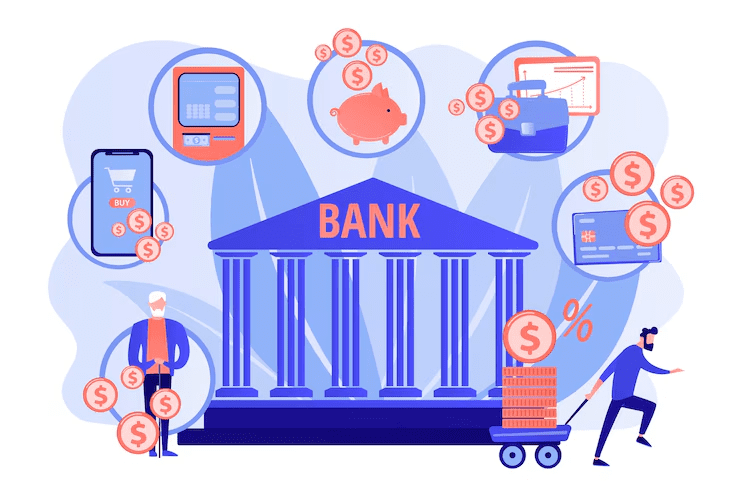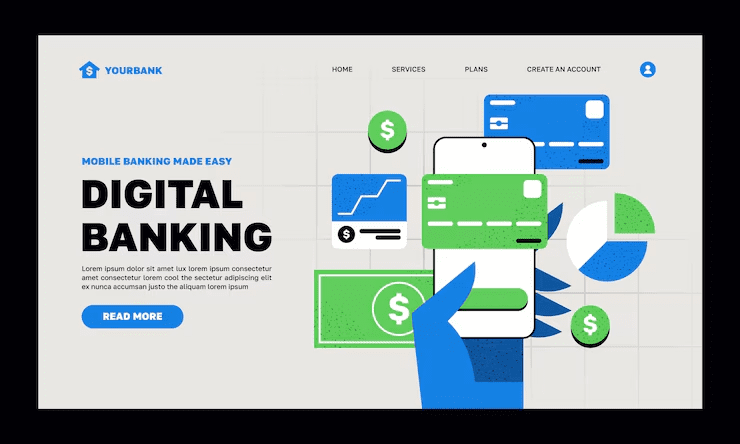
Banks are essential institutions that facilitate financial transactions and offer various services to individuals and businesses. Understanding the different types of banks is crucial for making informed decisions regarding personal finance and business needs. Each type serves a unique purpose, from commercial banks that focus on everyday consumer needs to investment banks that handle large-scale financial transactions for corporations.
In addition to commercial and investment banks, there are also savings banks, credit unions, and online banks, each catering to specific customer requirements. Savings banks offer a more traditional approach to saving, while credit unions provide a member-focused structure often with better rates. Online banks, with their digital-first model, present a modern alternative with lower fees and convenient access.
This article explores each type of bank in detail, highlighting their functions, key features, and how they can benefit customers. Readers will gain insights into selecting the right banking option based on their financial goals and circumstances.
Types of Banks

Banks serve various functions and cater to different segments of the economy. Understanding the types of banks helps in selecting the right financial institution for specific needs.
Retail Banks
Retail banks focus on individual consumers and small businesses. They offer a wide range of products, including checking and savings accounts, personal loans, and credit cards.
Commonly, retail banks operate through branches and ATMs, allowing easy access for customers. They often provide online and mobile banking services for convenience.
Interest rates on savings accounts and the fees associated with various services can vary significantly. Customers should compare options to find the best terms suited to their financial needs.
Commercial Banks
Commercial banks primarily serve businesses rather than individual consumers. They provide services like business loans, asset management, and cash management solutions.
These institutions are crucial for businesses looking to manage their finances effectively. They often support larger transactions and offer tailored financial products.
They may also assist businesses with treasury and trade finance services, catering to various sectors. Understanding the specific offerings can help businesses maximize their banking experience.
Investment Banks
Investment banks specialize in helping clients raise capital through securities. They assist corporations with mergers and acquisitions, underwriting, and advisory services.
These banks provide crucial financial analysis and market intelligence. They help clients navigate complex transactions and understand market trends.
Investment banks typically work with institutional investors and large corporations, making them distinct from retail and commercial banks. Their expertise in financial markets plays a vital role in corporate finance.
Central Banks
Central banks, such as the Federal Reserve in the United States, manage a nation’s currency and monetary policy. They play a critical role in stabilizing the financial system and regulating commercial banks.
These institutions control inflation, manage interest rates, and implement monetary policy. Central banks often act as the lender of last resort during financial crises.
Their overarching goal is to maintain economic stability, which influences overall economic growth. Understanding their function can clarify how financial systems operate on a larger scale.
Online Banks
Online banks operate primarily on the internet, allowing for streamlined services without traditional branch locations. They often offer lower fees and higher interest rates on savings due to lower overhead costs.
These banks provide essential services such as checking accounts, savings accounts, and loans, often through user-friendly apps.
Convenience and accessibility are key advantages as customers can access their accounts 24/7. However, it’s important to ensure that online banks are insured and regulated.
Credit Unions
Credit unions are member-owned financial cooperatives that provide a range of banking services. They focus on serving specific communities or groups, offering competitive interest rates and lower fees.
Members of credit unions often enjoy personalized service and the potential for profit sharing through dividends.
Eligibility for membership typically depends on common bonds, such as employment or geographic location. This community-oriented approach fosters a strong sense of belonging among members.
Savings and Loan Associations
Savings and loan associations (S&Ls) specialize in accepting savings deposits and making mortgage loans. They traditionally focus on residential lending and help consumers purchase homes.
Unlike commercial banks, S&Ls often offer higher interest rates on savings accounts. They also tend to provide more personalized customer service.
Since S&Ls play a vital role in promoting homeownership, they emphasize long-term customer relationships. Understanding their role in the housing market can benefit potential homeowners.
Banking Services

Banking services encompass a range of essential financial products designed to meet the diverse needs of customers. These services facilitate savings, day-to-day transactions, investment opportunities, and access to credit.
Savings Accounts
Savings accounts are fundamental products offered by banks to encourage individuals to save money. They typically earn interest, which may vary by institution but generally ranges from 3% to 7% annually.
For instance, Post Office Savings Account features competitive interest rates. Customers can easily deposit and withdraw funds while retaining liquidity. Some banks also provide special savings accounts designed for children or senior citizens, often with higher interest rates.
Account holders usually have no restrictions on the number of withdrawals, making it an accessible option for regular savers.
Checking Accounts
Checking accounts serve as transactional accounts for everyday banking needs. They allow customers to deposit and withdraw money frequently, making them ideal for managing daily expenses.
These accounts typically come with debit cards for easy access and may also offer online banking features. Monthly maintenance fees can vary, but many banks waive them if a minimum balance is maintained.
Customers can also benefit from overdraft protection, ensuring that transactions are honored even with insufficient funds.
Fixed Deposits
Fixed deposits (FDs) enable customers to invest a lump sum for a specific period at a fixed interest rate. Interest rates vary by bank and term length; for example, Bank of India offers competitive rates ranging from 5% to 8%.
Senior citizens often receive higher rates, adding an incentive for older investors. FDs generally come with flexible tenure options, allowing customers to choose periods ranging from a few months to several years.
Customers receive returns at maturity, making FDs a safe investment with predictable outcomes.
Loans
Banks provide various loan products to cater to the financial needs of individuals and businesses. Personal loans, for example, typically have interest rates starting around 10% to 24%, depending on the borrower’s credit profile.
Home loans have different rates based on the lender; Canara Bank offers attractive housing loan options starting from 8.5%. Loan Against Fixed Deposit products allow customers to borrow against their savings, offering lower interest rates.
Specialized loans, like Physician Loans, cater to specific professions, offering flexible terms and conditions.
Credit Facilities
Credit facilities allow customers to access funds as needed. Banks provide credit cards, which can have various benefits, including travel rewards, cashback, and low-interest rates.
For example, the ICICI Sapphiro Credit Card offers premium perks, including airport lounge access. Other options include the SBI Cash Back Credit Card, focusing on cash rewards for purchases.
Various cards serve different needs, such as the best credit cards for international travel or students, making it crucial for users to select based on their spending habits.
Other Financial Products
In addition to standard banking services, many institutions offer other financial products. National Savings Certificates provide a government-backed investment option with guaranteed returns.
Public Provident Fund (PPF), which offers some of the highest interest rates around 7.1%, is another popular choice for long-term savings.
Additionally, funds like the Sukanya Samriddhi Yojana offer special savings accounts for girls, fostering financial security for future education.
All these products reflect the diverse offerings within modern banking services, accommodating various financial goals and preferences.
Digital Banking

Digital banking has transformed how individuals and businesses manage their finances. It encompasses various services, including online payment platforms, mobile applications, and internet banking functionalities. The following sections provide insights into these critical components.
Online Payment Services
Online payment services have become essential for both consumers and retailers. They facilitate transactions without the need for physical cash, offering convenience and security. Payment options include digital wallets, credit cards, and bank transfers.
Popular platforms like PayPal and Stripe allow users to send and receive money easily. NEFT (National Electronic Funds Transfer) enables users to transfer funds electronically between banks, generally completing transactions within a few hours. Users can access these services through websites or dedicated apps, making payments straightforward.
Companies often utilize these services to streamline operations and improve customer satisfaction. Businesses can manage invoicing, track payments, and offer flexible payment options to encourage sales.
Mobile Banking
Mobile banking allows users to conduct financial transactions via smartphones and tablets. Most banks offer dedicated applications, providing a user-friendly interface for various banking services. Users can check account balances, transfer funds, and pay bills at their convenience.
To access mobile banking features, customers may need to activate specific services, such as an SBI Debit Card. Activating a card is usually a straightforward process involving the bank’s app or website. Additionally, customer support, such as the Yono SBI Customer Care Number, offers assistance for any issues related to mobile banking.
Security remains a priority in mobile banking. Banks implement measures like two-factor authentication and encryption to protect user data and prevent fraud.
Internet Banking Services
Internet banking, also known as online banking, allows users to manage their accounts through a web browser. Customers can conduct various transactions, including applying for loans like the SBI Mudra Loan online.
Users often encounter services such as updating personal information, like mobile numbers in Aadhaar, through their banking portal. This feature helps maintain accurate records for account management. Internet banking also enables users to check recent transactions and download statements easily.
Furthermore, customers can activate their Universal Account Number (UAN) online through their bank’s website. This seamless integration of services ensures that users have full control over their financial activities from the comfort of their homes.
Operational Details of Banks

This section outlines key aspects of bank operations, including their working hours, customer service practices, account management procedures, and methods for handling complaints.
Working Hours and Timing
Banks typically operate from Monday to Friday, with some branches open on Saturdays. For example, SBI Bank operates from 10:00 AM to 4:00 PM on weekdays and may have limited Saturday hours.
Lunch breaks can vary by branch, usually lasting for about one hour, often between 1:00 PM and 2:00 PM. Extended hours may apply to select branches; thus, checking specific branch timings is recommended.
It’s essential for customers to be aware of these timings to avoid inconvenience during visits.
Customer Service
Customer service is a critical component of banking operations. Banks offer multiple channels for assistance, including in-branch, telephone, and online support.
SBI’s Yono app, for example, provides a user-friendly interface for customer inquiries. The Yono SBI customer care number is an essential resource, assisting clients with various banking issues.
Staff training ensures they are prepared to handle queries efficiently, enhancing customer satisfaction.
Account Management
Account management involves various services to assist clients with their banking needs. Customers need to know their banks’ minimum balance requirements; for SBI, this can differ by account type.
Services like balance checks are straightforward; for instance, Union Bank offers a balance check number for customer convenience. Banks also provide online tools for managing accounts, ensuring clients can access their information anytime.
Educating customers on these tools is crucial for effective account management.
Complaint and Redressal Mechanisms
Banks have established mechanisms for addressing customer grievances. This includes formal complaint submission processes, typically available on their websites or by visiting branches.
Efficient complaint resolution enhances trust in banking institutions. Customers are encouraged to document their issues clearly when filing complaints. The timely response to complaints is vital, with most banks aiming for resolution within a specified timeframe.
Understanding these mechanisms can empower clients to advocate for their rights effectively.
Investing in Banking Products

Investing in banking products provides various options for individuals seeking safe and stable returns. Understanding fixed deposits, recurring deposits, and government-backed schemes can help investors make informed decisions.
Fixed Deposits as Investment
Fixed deposits (FDs) are popular due to their security and predictable returns. They offer higher interest rates than regular savings accounts, making them an attractive investment option.
Investors typically choose a tenure ranging from a few months to several years. The interest rates can vary based on the bank and the duration of the deposit.
For instance, the Post Office Fixed Deposit Interest Rate is competitive, often providing stable returns for investors. Rates are reviewed periodically, ensuring alignments with market trends.
Recurring Deposits
Recurring deposits (RDs) enable individuals to invest a fixed amount regularly, typically monthly. This method benefits those who prefer saving in smaller increments rather than a lump sum.
Many banks offer attractive interest rates on RDs, providing reliable returns over time. The tenure can range from 6 months to 10 years, allowing flexibility in planning.
Investors can expect to receive the maturity amount, which includes both principal and interest earnings at the end of the term.
Government-backed Schemes
Government-backed schemes, such as the Sukanya Samriddhi Scheme, are designed to encourage savings among specific demographics, particularly for the education and marriage of girl children.
These schemes typically offer higher interest rates compared to conventional banking products, ensuring the safety of investors’ funds.
They come with tax benefits under specific conditions, adding an incentive for individuals to invest in these products. The interest rate is set by the government and is subject to periodic reviews, staying competitive in the financial landscape.
Banking for Specialized Segments
Different banking services cater to the unique needs of various groups in society. This section focuses on specialized banking services for students, senior citizens, small businesses, and non-resident Indians (NRIs).
Student Banking Services
Student banking products are designed to meet the financial demands of young learners. Many banks offer no-fee checking accounts with features such as online banking and mobile payments.
Some financial institutions even provide a Best Credit Card for Students, which may come with low-interest rates and discounts on purchases related to education, such as textbooks.
Additionally, banks often offer student loans with favorable terms and lower interest rates to assist with tuition and living expenses.
Promotions may include financial literacy resources, helping students better manage their finances for the future.
Senior Citizen Banking
Banking services for senior citizens prioritize accessibility and security. Many banks provide special accounts with higher interest rates on fixed deposits, often known as Senior Citizen FD Rates.
These rates typically exceed standard offers, ensuring better returns on savings.
Additionally, dedicated customer service representatives can assist elderly clients with banking inquiries, ensuring a straightforward experience.
Many institutions also offer discounted fees on transactions and services tailored to seniors, such as simplified loan applications and specialized retirement plans.
Banking for Small Businesses
Small businesses benefit from banking products that are flexible and supportive of their growth. Banks typically offer business checking accounts with tailored features, such as lower transaction fees and online account management.
Small business loan options often include microloans and lines of credit, designed to accommodate companies with less established credit history.
Business owners can access advisory services, which may include insights on Small Business Ideas in Hindi or other resources to facilitate informed decision-making.
Furthermore, banking partnerships can provide access to industry-specific financing solutions, enhancing overall profitability.
NRI Banking Services
NRI banking services cater to the financial needs of non-resident Indians living abroad. Banks offer specialized accounts like NRE (Non-Resident External) and NRO (Non-Resident Ordinary) accounts for easy fund transfers and management.
NRE accounts usually offer benefits such as tax-free interest and repatriation of funds, making them attractive for savings.
NRO accounts cater to income generated in India, allowing better local currency management.
Banks also provide investment options for NRIs, including real estate and mutual fund investment opportunities tailored for Indian markets, helping them to stay connected to their roots while abroad.
Credit Score and Lending

Credit scores play a crucial role in the lending process. They help lenders assess the risk of lending money to borrowers. Understanding these scores and how they impact loan eligibility is essential for potential loan applicants.
Understanding CIBIL Scores
CIBIL scores range from 300 to 900 and reflect an individual’s creditworthiness. A higher score indicates a lower risk to lenders. For personal loans, a score of 750 or above is often considered favorable.
Factors influencing CIBIL scores include:
- Payment History: Timely payments boost scores.
- Credit Utilization: Keeping usage under 30% of total credit limits is ideal.
- Length of Credit History: A longer history can positively impact scores.
Checking a CIBIL score regularly helps individuals manage their financial health and identify areas for improvement.
Loan Eligibility
Loan eligibility decisions largely depend on credit scores and other criteria. Lenders typically evaluate:
- Income Level: Higher incomes generally increase eligibility.
- Existing Debt: A lower debt-to-income ratio is preferable.
- Credit History: A clean, consistent repayment history enhances chances.
Different loans have varying requirements. For instance, personal loans often require a minimum CIBIL score of 750. Understanding these factors allows individuals to prepare better for applying for loans.
Banking Regulation and Infrastructure
Banking regulation and infrastructure are crucial for maintaining a secure and efficient financial system. They ensure that banking institutions operate within a framework that promotes stability, transparency, and consumer protection.
RBI Guidelines and Oversight
The Reserve Bank of India (RBI) plays a pivotal role in regulating banks in India. It issues guidelines that govern various aspects of banking operations, such as capital adequacy, risk management, and liquidity requirements. These guidelines help maintain a robust banking sector.
RBI conducts regular inspections and audits of banks to ensure compliance. It also monitors the financial health of institutions, taking corrective actions when necessary. RBI’s mandate includes protecting depositors’ interests and fostering financial inclusion through effective policies.
Financial Stability and Crisis Management
Financial stability is a primary concern for regulators. The RBI has established frameworks to identify risks that could lead to systemic crises. It collaborates with other regulatory bodies to conduct stress tests and assess the resilience of banks.
In times of financial distress, RBI employs crisis management mechanisms. It can provide liquidity support to banks facing severe challenges, helping them navigate difficult periods. These measures are essential for maintaining public confidence in the banking system.
Banking Security and Fraud Prevention
Security in banking is paramount, given the increasing prevalence of cyber threats. The RBI emphasizes the implementation of robust cybersecurity measures to protect sensitive financial data. Banks are required to adopt advanced technologies and regular audits to safeguard their systems.
Fraud prevention strategies are also critical. The RBI mandates that banks establish comprehensive protocols for identifying and reporting fraudulent activities. Staff training and awareness programs are essential to enhance vigilance against such threats, ensuring a safer banking environment.
